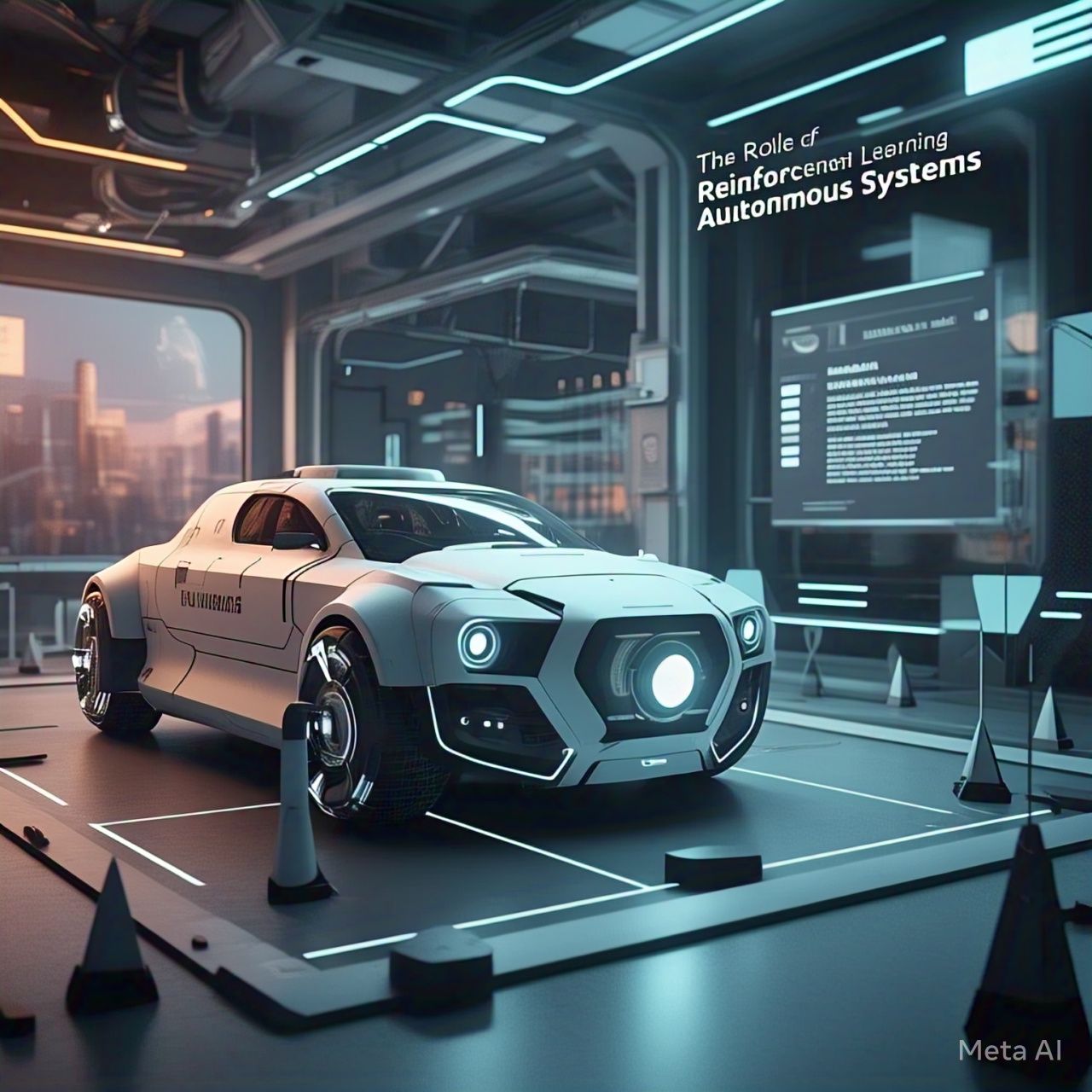Table of Contents
- Introduction
- Understanding Reinforcement Learning
- Applications of Reinforcement Learning in Autonomous Systems
- Autonomous Vehicles
- Robotics and Automation
- Financial Trading Systems
- Healthcare and Personalized Medicine
- Key Challenges in Reinforcement Learning for Autonomous Systems
- Sample Efficiency and Training Time
- Safety and Robustness
- Explainability and Interpretability
- Ethical and Legal Considerations
- Opportunities and Future Directions
- Improved Algorithms and Techniques
- Transfer Learning and Sim-to-Real Adaptation
- Multi-Agent Reinforcement Learning
- AI and Human Collaboration
- Conclusion
- FAQs
Introduction
Reinforcement learning (RL) has emerged as a critical component in the development of autonomous systems, enabling machines to make decisions, learn from their environment, and improve over time. From self-driving cars to robotic automation and financial trading, RL allows autonomous agents to optimize performance in dynamic, uncertain environments. This article explores the role of RL in autonomous systems, highlighting its applications, challenges, and future potential.
Understanding Reinforcement Learning
Reinforcement learning is a type of machine learning where an agent learns by interacting with an environment, receiving rewards for beneficial actions and penalties for undesirable ones. Unlike supervised learning, which relies on labeled data, RL agents explore and learn optimal behaviors through trial and error.
Key Components of Reinforcement Learning:
- Agent: The learner or decision-maker.
- Environment: The world in which the agent operates.
- Actions: The choices the agent can make.
- Rewards: Feedback signals that guide learning.
- Policy: The strategy the agent follows to maximize rewards.
- Value Function: Predicts future rewards for a given state.
- Q-Learning & Deep Q Networks (DQN): Methods used to optimize learning.
Applications of Reinforcement Learning in Autonomous Systems
1. Autonomous Vehicles
Reinforcement learning plays a crucial role in self-driving cars by enabling:
- Path Planning: RL algorithms optimize route selection for efficiency and safety.
- Traffic Navigation: Autonomous cars learn from real-time traffic patterns.
- Collision Avoidance: RL helps vehicles adapt to sudden obstacles and changing conditions.
2. Robotics and Automation
- Industrial Automation: RL enhances precision in robotic arms for manufacturing.
- Humanoid Robots: RL enables robots to learn human-like movements and interactions.
- Drones and UAVs: RL is used for autonomous flight path optimization.
3. Financial Trading Systems
- Market Prediction: RL helps optimize trading strategies by learning from market fluctuations.
- Risk Management: Autonomous trading bots adapt to financial risks in real time.
- Portfolio Optimization: RL agents allocate assets efficiently to maximize returns.
4. Healthcare and Personalized Medicine
- Drug Discovery: RL accelerates the search for new drug compounds.
- Personalized Treatment Plans: RL tailors treatments based on patient responses.
- Medical Imaging: AI-powered RL assists in diagnostic accuracy and decision-making.
Key Challenges in Reinforcement Learning for Autonomous Systems
1. Sample Efficiency and Training Time
- RL requires vast amounts of data, making training time-intensive.
- High computational costs limit real-time implementation in critical applications.
2. Safety and Robustness
- RL agents can exhibit unpredictable behavior, raising safety concerns in real-world applications like self-driving cars.
- Ensuring robustness against adversarial attacks remains a challenge.
3. Explainability and Interpretability
- Black-box nature of RL models makes it difficult to understand their decision-making process.
- Lack of transparency limits trust in AI-powered autonomous systems.
4. Ethical and Legal Considerations
- AI decision-making in autonomous systems raises questions about accountability and responsibility.
- Legal frameworks for RL-driven autonomy are still evolving.
Opportunities and Future Directions
1. Improved Algorithms and Techniques
- Meta-learning: AI systems that can learn how to learn, reducing training time.
- Model-based RL: Enhancing efficiency by incorporating predictive models of the environment.
2. Transfer Learning and Sim-to-Real Adaptation
- RL agents trained in simulations can be adapted to real-world scenarios.
- Reduces the cost and time required for real-world data collection.
3. Multi-Agent Reinforcement Learning (MARL)
- RL is evolving to accommodate multi-agent systems, allowing collaboration among autonomous entities.
- Applications include swarm robotics and coordinated traffic management.
4. AI and Human Collaboration
- RL systems can complement human expertise, leading to improved decision-making in fields like healthcare and finance.
- Human-in-the-loop RL enhances AI adaptability to real-world constraints.
Conclusion
Reinforcement learning is transforming autonomous systems by enabling machines to learn from their environment and make data-driven decisions. While challenges such as safety, interpretability, and computational efficiency remain, advancements in RL algorithms and AI-human collaboration present exciting opportunities for the future. By addressing these challenges, RL will continue to drive innovation across industries, paving the way for safer and more intelligent autonomous systems.
FAQs
1. What is reinforcement learning in simple terms?
Reinforcement learning is a type of AI where an agent learns by interacting with its environment, receiving rewards for good actions and penalties for bad ones.
2. How is reinforcement learning used in self-driving cars?
RL helps autonomous vehicles make real-time decisions for navigation, collision avoidance, and optimal route planning.
3. What are the biggest challenges in reinforcement learning?
Challenges include high computational costs, long training times, safety concerns, and the lack of model interpretability.
4. How does reinforcement learning improve robotics?
RL enables robots to adapt to dynamic environments, optimize tasks, and improve efficiency through continuous learning.
5. What is the future of reinforcement learning in autonomous systems?
Future trends include improved efficiency through meta-learning, multi-agent collaboration, and enhanced AI-human interaction for safer and more reliable autonomous systems.
Table: Comparison of RL Challenges and Opportunities in Autonomous Systems
| Category | Challenges | Opportunities |
|---|---|---|
| Data & Training | High sample complexity, long training times | Transfer learning, sim-to-real adaptation |
| Safety & Robustness | Unpredictable behavior, vulnerability to attacks | Improved model-based RL, robust training |
| Interpretability | Black-box nature, lack of transparency | Explainable AI techniques |
| Ethics & Regulations | Legal ambiguity, responsibility issues | AI governance, ethical AI frameworks |
By addressing these challenges and embracing the opportunities, reinforcement learning will continue to drive innovations in autonomous systems, making them safer, smarter, and more efficient.




